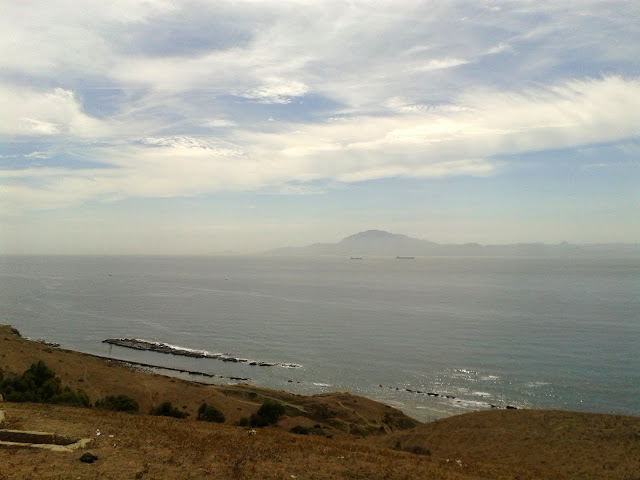Thurs 10 Sep 2015
As this was our last day we decided to have a bit of a lie-in. I wandered around the hotel gardens at about 8ish and found chiffchaff, stonechat, spotless starling, chaffinch, Sardinian warbler and heard a wren. The usual gang of house sparrows accompanied us for breakfast.
The Mediterranean was shrouded in fog this morning, so our morning pelagic trip was postponed to the afternoon by the operators. Instead we set off towards Medina to find white-rumped swifts, but had to return when David realised he had left his ‘bins at the breakfast table! Once back on track we stopped for a third and final time at the quarry by the Montenmedio golf course. We still did not find the eagle owl, but in the trees by the car we found wryneck, common whitethroat and a pied flycatcher.
We left for the long drive to Medina-Sedonia, where white-rumped swifts were known to be nesting under bridges on the A381 Algeciras–Jerez road around Km60. We did not know the exact location, but we found several likely looking spots. We drove up and down the old road beside the motorway searching, but we never found any. Unfortunately we managed to hit and kill a Sardinian warbler that flew directly in front of the car as cruised up and down. As we stood and ate our lunches the usual cast of raptors passed over, including a single Egyptian vulture. Red-rumped swallow in good numbers too.
We gave up on the white-rumped swifts and headed for a second visit to La Janda. The red-necked nightjar were worth a second look, but neither David nor I managed to find any! We had to wait for Bob to point out the three he had found.
We only managed to get a distant view of a single, perched black-winged kite on our previous visit, but this time we saw three much closer. Two of them were hunting, treating us to a display of their hovering and dropping with the wings held in a high V. One of the most memorable sightings of this trip.
As it was now so late in the afternoon we decided to cancel our pelagic trip and head back to the hotel. We decided to have one last look for the common bulbuls in Tarifa. This time their noisy calls indicated that they were around, but we never managed to see them in the half hour we spent in the car park!
That concluded our birding trip, as tomorrow we had to leave early the next morning to catch our early flight from Malaga to Birmingham.
Click here for the complete species list.













